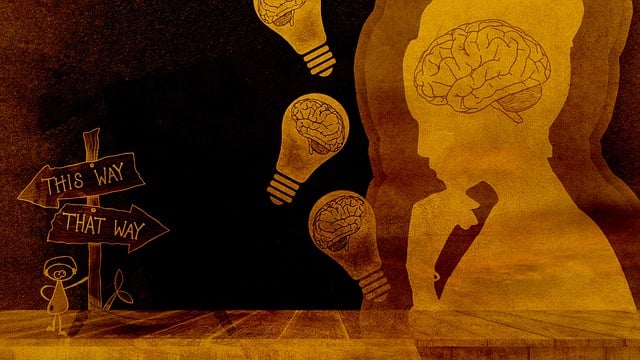Mental health advocacy, led by organizations like Castle Rock Child Abuse Therapy (CRCAT), focuses on raising awareness, dismantling stigma, and providing essential services, especially for vulnerable populations. CRCAT offers tailored therapy for traumatized children, education on childhood trauma, and self-care practices to restore hope and strengthen communities. A multi-faceted approach including awareness campaigns, community engagement, and practical tools is needed to improve mental well-being. Recent progress through advocacy has challenged stigma and built support networks, with future goals focusing on cultural sensitivity and media outreach to ensure access to resources for diverse communities.
Mental health advocacy initiatives play a crucial role in fostering well-being and breaking down stigmas. This article explores the significance of these efforts, highlighting a case study from Castle Rock Child Abuse Therapy—a leading organization dedicated to mental health support. We delve into effective strategies for advocacy programs, examining their profound impact on communities.
From raising awareness to shaping policies, mental health advocacy is a powerful force driving positive change, as evidenced by successful models like Castle Rock’s approach.
- Understanding Mental Health Advocacy: A Necessary Mission
- Castle Rock Child Abuse Therapy: A Case Study in Advocacy
- Strategies for Effective Mental Health Advocacy Initiatives
- The Impact and Future of Mental Health Advocacy Programs
Understanding Mental Health Advocacy: A Necessary Mission

Mental health advocacy is a vital mission that aims to raise awareness and promote understanding of various mental health issues. It involves educating communities, dismantling stigma, and ensuring access to essential services like Castle Rock Child Abuse Therapy. By advocating for mental health, we empower individuals to seek support and foster environments conducive to mental wellness.
This initiative is particularly crucial in addressing the growing need for mental health services, especially among vulnerable populations. Through advocacy, professionals can influence policy changes, improve service delivery, and integrate mental health into mainstream conversations. Moreover, it involves supporting research, developing Mental Wellness Coaching Programs, and implementing risk assessment strategies for mental health professionals to ensure their well-being and effectiveness in helping others.
Castle Rock Child Abuse Therapy: A Case Study in Advocacy

Castle Rock Child Abuse Therapy (CRCAT) stands as a powerful example of mental health advocacy in action. This initiative focuses on supporting children who have experienced trauma, offering specialized therapy and a safe space to heal. By addressing child abuse and its lasting impact, CRCAT contributes significantly to the development of resilient individuals and communities. Their approach involves evidence-based treatments tailored to each child’s unique needs, fostering inner strength development and promoting healthy coping mechanisms.
Through dedicated advocacy, CRCAT raises public awareness campaigns about childhood trauma, challenging societal stigma and encouraging early intervention. They provide resources and education, empowering both victims and their families with self-care practices to navigate the healing journey effectively. This holistic approach not only restores hope but also strengthens the mental health landscape, ensuring children can thrive after adversity.
Strategies for Effective Mental Health Advocacy Initiatives

Mental health advocacy initiatives require a multi-faceted approach to create meaningful change and improve access to care. One effective strategy is to raise Mental Health Awareness through educational programs and campaigns that dispel myths and promote early intervention. Engaging communities, schools, and workplaces in these efforts can foster a culture of support where individuals feel comfortable seeking help.
Additionally, initiatives should focus on Stress Management techniques and Confidence Boosting activities tailored to different demographics. For instance, Castle Rock Child Abuse Therapy can implement programs that teach young people resilience and coping mechanisms, empowering them to navigate life’s challenges. By combining advocacy with practical tools, these initiatives can lead to sustained improvements in mental well-being across various populations.
The Impact and Future of Mental Health Advocacy Programs

Mental health advocacy programs have made significant strides in recent years, shedding light on issues that were once overshadowed by stigma and silence. These initiatives, such as Castle Rock Child Abuse Therapy, play a pivotal role in shaping a more compassionate and understanding society. Through community engagement, education, and support networks, they empower individuals to speak up about their struggles and seek the help they deserve.
Looking ahead, the future of mental health advocacy holds promise with an increasing focus on cultural sensitivity in mental healthcare practice. By incorporating conflict resolution techniques and leveraging the power of media, like Mental Wellness Podcast Series Production, these programs can reach wider audiences and provide valuable resources to diverse communities. This collective effort ensures that everyone has access to the support needed to navigate life’s challenges and foster long-term mental wellness.
Mental health advocacy initiatives, as exemplified by Castle Rock Child Abuse Therapy, play a pivotal role in shaping supportive communities. By employing effective strategies and learning from successful case studies, we can revolutionize mental healthcare access and outcomes. As we look to the future, continuing these advocacy programs is essential to ensuring a healthier, more resilient society for all.














